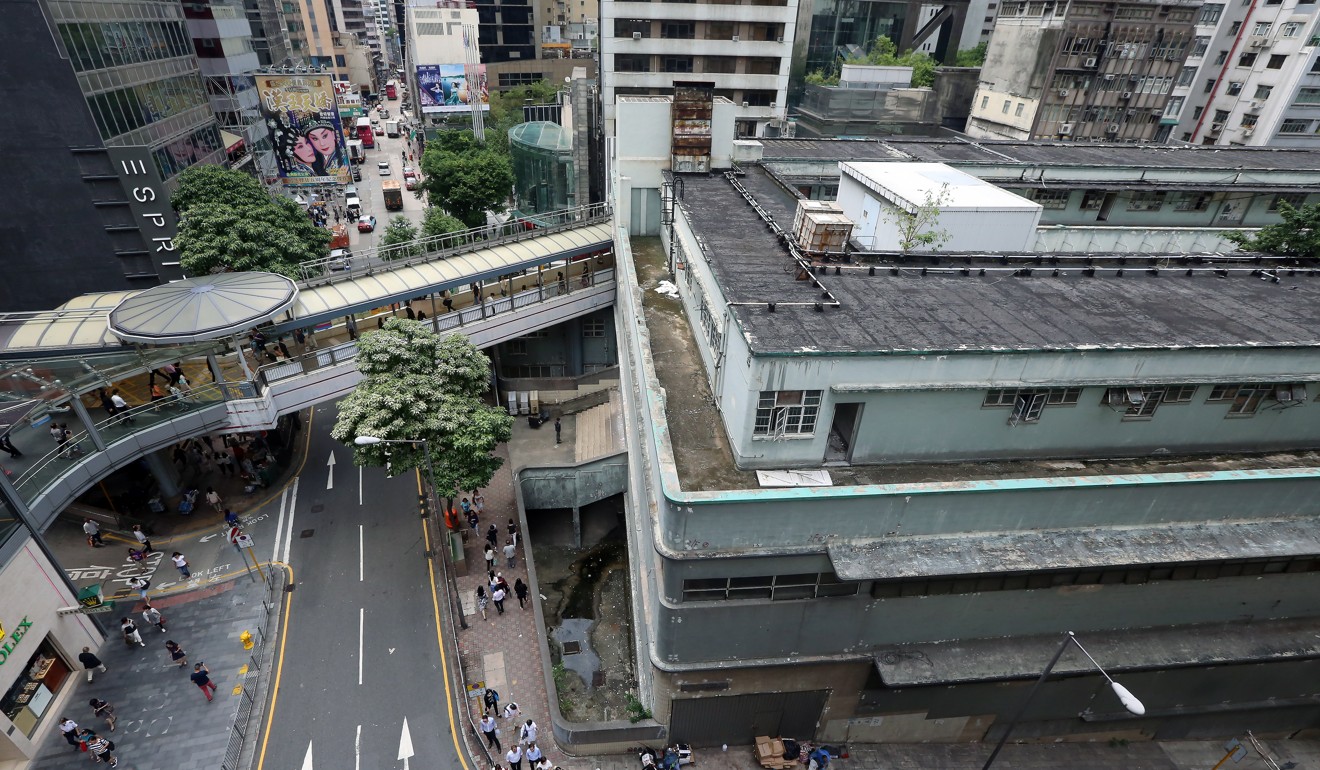
Central Market to serve up more disappointment
We’ll end up with a building that will fail to realise its full commercial potential, heritage value or provisions for leisure the public desperately needs
The decade-old controversy over what to do with the Central Market has turned it into a potent symbol of everything that has gone wrong with the Special Administrative Region.
For more than a century and a half, it had played a key part in the street life of locals in the busy district. Then, 14 years ago, the government announced a plan for redevelopment.
Bureaucrats, developers and heritage activists all wanted a piece of the action. The result was that nothing much could be done about it. Floors were shut, leaving just a handful of stores.
The primary functions of the Bauhaus-style heritage building since have been to provide a connection point with the district’s extensive elevated walkway system, and public toilets, which remain dirty, smelly and wet to this day.

Now at last, renovation work is under way. The Urban Renewal Authority has been tasked with revitalising the site and preserving its heritage under a HK$740 million plan. But no one knows exactly what the plan is, leading some activist groups such as the Central Market Concern Group to accuse the URA of being non-transparent and conspiratorial.
Given the URA’s dismal record, you can hardly blame the critics. Just think Lee Tung “Wedding Card” Street in Wan Chai and all the broken promises there.
But there is another explanation. The URA has not known what it is doing ever since it was given the job in 2009. Redevelop with a big time developer – that’s something it knows well. But preserving heritage?

One of the project’s “guiding principles” is the “provision of affordable cultural and retail uses”. But the URA doesn’t know what that means. In a reply to this newspaper in August, a spokeswoman said a consultant company had been hired to advise what “affordable retail and cultural” activities meant!
We might have been better off if the government had stuck with the original plan and sold the site to a developer. Now, architectural firm M CO Design and non-profit group Designing Hong Kong have an excellent idea: Bulldoze the market and turn it into a large open space for the public. But the URA would never stand for it.
What we will end up withis likely to be a suboptimal building that will fail to realise its full commercial potential, heritage value or provisions for space and leisure the public desperately needs.

